Reviews
The Brief But Influential Career of Ree Morton Gets Major Retrospective at Reina Sofia
Morton, who died in a car accident, created all her oeuvre in just nine years.
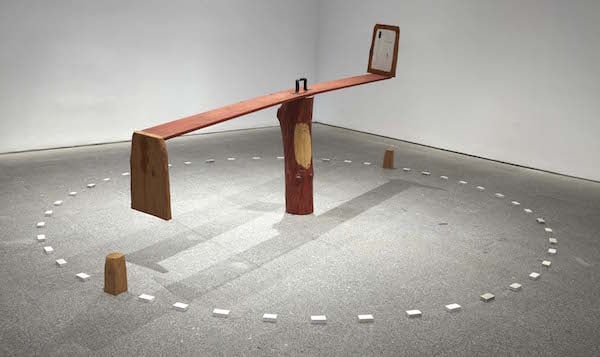
Photo: Courtesy Museo Reina Sofía
Morton, who died in a car accident, created all her oeuvre in just nine years.

Ree Morton is the quintessential artists’ artist. Her oeuvre is revered by insiders, and it’s easy to trace her enduring influence in the work of a younger generation. Yet the market for her work is small (with a surprising number of works in the show still within her estate), and her name is still unknown to many art lovers.
This could finally change thanks to a timely retrospective, organized by the Museo Reina Sofía in Madrid, which spans her entire career and features many of her key pieces. This long-overdue exhibition could perhaps kick-start an interest in Morton—and jumpstart her market.
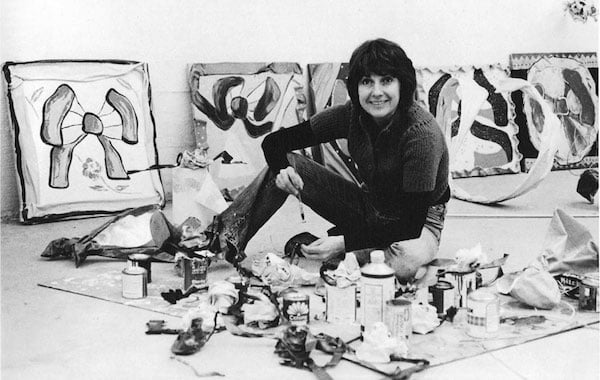
Ree Morton.
Photo: via Art Daily.
Morton’s work is as unusual as her biography. Born in upstate New York, in 1936, Morton, who was a trained nurse, only started making art in her thirties and received her MFA at the age of 34, already a mother of three.
Her entire body of work was created between 1968 and 1977, when she died prematurely in a car accident at the age of 41. But her vision seems to have erupted almost fully formed and, in just a few years, she managed to deliver more than many artists cobble together in a lifetime.
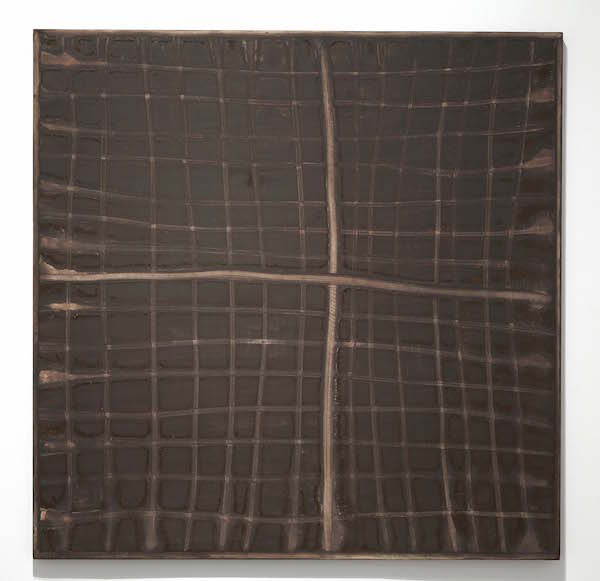
Ree Morton, Untitled (1970).
Photo: Courtesy of Museo Reina Sofía.
It’s even possible to identify a solid artistic evolution throughout those nine years. Her first paintings and drawings, for instance, were heavily influenced by the prevailing Post-Minimalist trend of the time. Morton, however, chose a more organic approach to the style, akin to the work of her contemporary Eva Hesse and to the style that Lucy Lippard aptly named “Eccentric Abstraction” in her legendary 1966 group exhibition of that title. So, while Morton did indeed work with grids and series, her lines bend and pulsate, her palette veers towards bodily browns, greens, and yellows, and her patterns are, more often than not, round like endlessly-reproducing cells.
Between 1973 and 74, Morton crafted her most famous pieces: a cluster of immersive installations—which seem to nod to Paul Thek‘s coeval environments—that bring elements from nature into the gallery. Morton had a penchant for tree trunks and branches, and small-scale items, as if taken from a children’s book about mythical creatures.
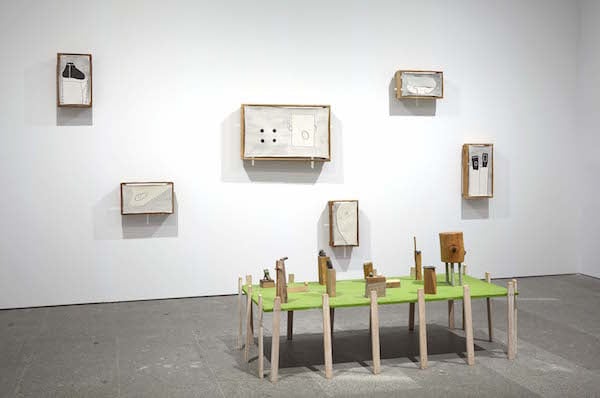
Ree Morton, Souvenir Piece (1973).
Photo: Courtesy of Museo Reina Sofía.
In that sense, To Each Concrete Man, shown in the basement of the Whitney Museum in 1974 (and brilliantly described at the time by Peter Schjeldahl in a review for the New York Times as having “the air of belonging in a nightclub for forest gnomes”); Sister Perpetua’s Lie; Souvenir Piece (both 1973); and See-Saw (1974) represent the apex of Morton’s output. Playful but hermetic, symbolic yet obtuse, these works entice viewers with the promise of something fun and innocent, and then proceed to frustrate them with their refusal to reveal meaning.
There’s also another inchoate, tantalizing aspect to her work: that of unfulfilled promise. Shortly before her untimely death, in a grant application presented in the exhibition in a vitrine full of historic documents, Morton explained that the small elements in her installations were gaining increasing importance and that she wished to explore her sculptures as an “arena” for performance.
The use of installations and environments as sets for performances, and of sculptural items as tools to be employed within them, heralds the performative sculpture created in the 1980s by a number of artists, including Franz West‘s “adaptives” or the theater props of Guy de Cointet (with whom Morton also shared an interest in the writings of Raymond Roussel), as well as being a trope that is currently being re-explored by a number of young artists.
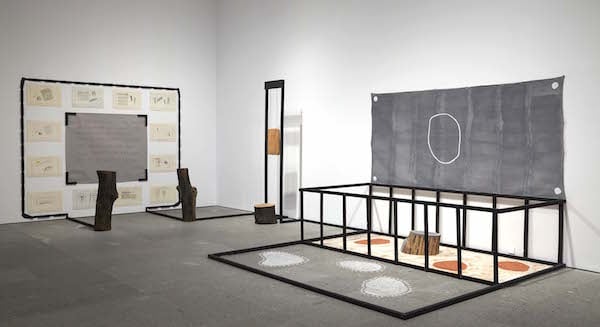
Ree Morton, Sister Perpetuas Lie (1973).
Photo: Courtesy of Museo Reina Sofía
Both the life and work of Morton, despite being tragically cut short, are endlessly inspiring. Contemporary art, in all its youth-worshiping glory, can seem like an unwelcoming environment for late bloomers. But not every artist has a vision and a calling (or the chance to pursue them) in their late teens and early twenties, and Morton’s brilliant oeuvre proves that youth should never be considered a pre-requisite to enter the art circuit.
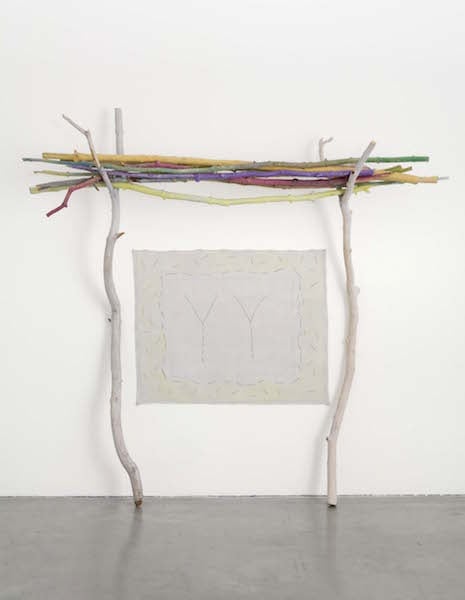
Ree Morton, Untitled (1971-73).
Photo: Courtesy of Museo Reina Sofía.
“Be a Place, Place an Image, Imagine a Poem” is Morton’s first retrospective, all-encompassing exhibition since her 2008 show at Vienna’s Generali Foundation and her 1980 retrospective (her first) at New York’s New Museum, staged three years after her death. The shows might have been sparse and general recognition elusive, but the critical interest in Morton’s works is certainly gaining momentum.
Aided by the galleries that represent her estate (Alexander and Bonin, in New York, and Annemarie Verna, in Zurich) and by the staunch support of young curators like João Ribas, Morton is at last being written into art history, a terrain that she inhabited perhaps briefly, but where she left an indelible mark that many are still trying to understand, while others have been silently treading on the maverick path she opened.
Ree Morton, “Be a Place, Place an Image, Imagine a Poem” is on view at Museo Reina Sofía, Madrid, from May 20-September 28.